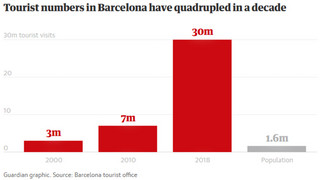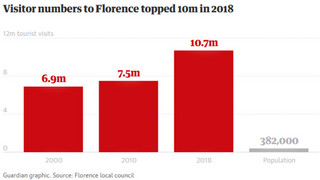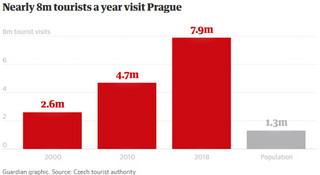The village of Hallstatt in Austria, which was the inspiration for the kingdom of Arendella in the movie Frozen and has been declared a world heritage site by Unesco, decided to raise a fence so as to prevent the huge crowd tourists which flocks every year to the region. This is one more place added to the list of towns and villages trying to deal with its phenomenon hypertourism.
Not long ago, the enchanting Portofino in Italy announced the banning selfies with the imposition of a fine for the offenders, while the authorities of Budva in Montenegro, but also of Split and Dubrovnik in Croatia decided the imposing a fine on those tourists who go around in beach clothes or topless.
The Municipality of Amsterdam, in view of the tourist season, started a campaign to block any tourists who wish to visit the city for ‘unsalting’. Starting with the British, many of whom have repeatedly caused backlash for their behavior.
“Tourists go home”
The “anti-tourism” movement is growing stronger year after year in response to the phenomenon of hypertourism, which has returned strongly after the era of the corona virus and the bans. Undeniably the benefits of tourism are clear for the economy of local societies and countries, but also the psychology of people who travel knowing new places. It is a huge source of revenue, creating jobs and investment.
However, unfortunately the impact is not only positive and the reason is overtourismthat is, the presence of a large number of visitors to a specific destination. There are many who say they are fed up with the huge crowds that overwhelm the most touristy areas. The images are also known in Greece, which is one of the most popular tourist destinations. The phenomenon of over-tourism makes the daily life of the locals difficult, skyrockets the prices of houses and products, while it also has a significant negative environmental impact, endangering or degrading natural landscapes of rare beauty and destroying the special “identity” of areas, which the tourists are supposed to wish to experience.
Unfortunately the tourism industry often focuses solely on growth and profit, marginalizing impact. For this reason many point out that the problem does not lie in a region wanting to attract tourists, but in the way it did so, resulting in the situation getting out of control. After decades of uncontrolled growth, it seems that several areas have crossed the critical threshold with the result that in them tourism now creates proven more problems than benefits.
In some popular destinations in Europe, it is recorded annually up to 20 times the number of tourists than the number of residents. The following tables, from Guardianshow indicatively the increase in tourists in some European cities in 2018, before the Covid19 pandemic appeared:



Spain could be considered the birthplace of the ‘anti-Tituri’ movement since for years citizens’ movements have been fighting against the effects of hypertourism. “Tourists go home”, is the slogan written on walls.
Barcelona (according to many the capital of anti-tourism), Seville, San Sebastián, the Canary Islands, Mallorca and other Spanish regions have taken a number of measures in an attempt to limit the impact of tourism on local people. Many Italian cities followed, which are among the most popular tourist destinations in Europe and gradually the movement spread to take on global proportions. From Europe and the Balkans to Japan and Thailand, reactions and measures have been recorded, which, however, do not always have the expected result.
The role of the “responsible tourist”
The initiative “responsibletravel“, on her page, she points out how the solution could also be provided by the travelers themselvesif they learn to work with their choices and behavior as “responsible tourists”that is, to travel in such a way as to maximize the positive effects and minimize the negative ones. “Two things we must always keep in mind are place and time”he says in a publication, urging travelers to also visit areas that do not face the phenomenon of hypertourism, “far from the hordes of the mainstream”.
“In this way, you will not only get a better picture of the daily life of the place you visit, but also the residents will welcome you in a warm way. There are many places around the world that need and want more tourists“, he emphasizes. But even if you finally insist on visiting popular destinations, then “do it off-peak”. “This will be more pleasant for you, but also for the local residents, and you will also save money.” This option could give you a much more authentic holiday experience.
Source: News Beast
With 6 years of experience, I bring to the table captivating and informative writing in the world news category. My expertise covers a range of industries, including tourism, technology, forex and stocks. From brief social media posts to in-depth articles, I am dedicated to creating compelling content for various platforms.







